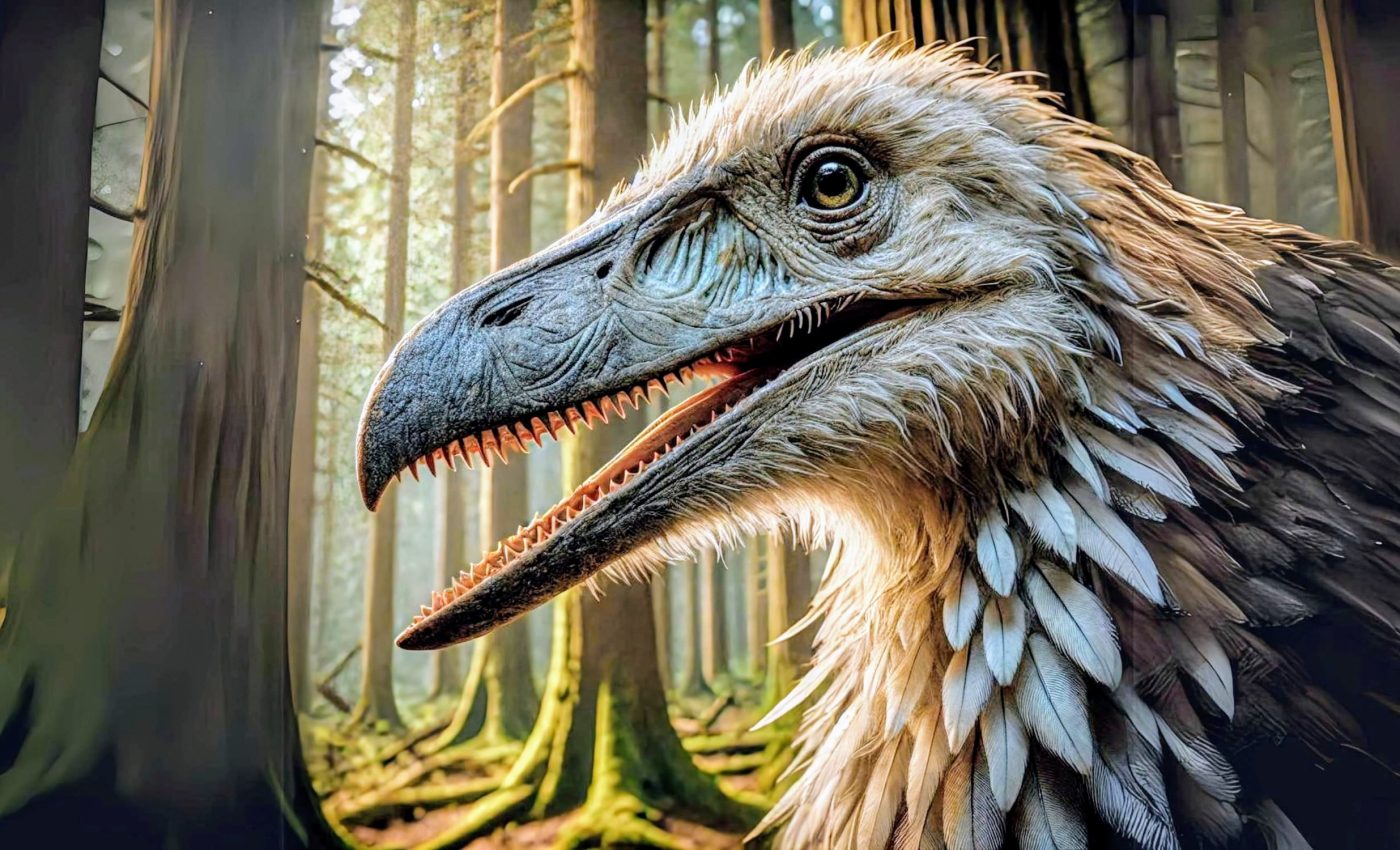
This ancient bird ate fruit, so why did it have teeth like a carnivore?
If you’ve ever wondered how paleontologists figure out what animals from millions of years ago ate, their secret lies in the extraordinary fossils they find. Recently, they stumbled upon a fascinating discovery that shattered a long-standing hypothesis. Fossilized fruit seeds in the stomachs of ancient dinosaur birds with sharp teeth.
It’s the first evidence that contradicts a widely held notion that this particular bird species, called Longipteryx chaoyangensis, feasted on fish or insects.
Longipteryx chaoyangensis
Longipteryx chaoyangensis, the fruit-eater, lived 120 million years ago in present-day northeastern China. With a long skull and teeth only at the tip of its beak, this bluejay-sized bird is a favorite amongst paleontologists for its peculiar features.
Alex Clark is a PhD student at the Field Museum and the University of Chicago and a co-author of the paper.
“Tooth enamel is the hardest substance in the body, and Longipteryx’s tooth enamel is 50 microns thick. That’s the same thickness of the enamel on enormous predatory dinosaurs like Allosaurus that weighed 4,000 pounds, but Longipteryx is the size of a bluejay,” said Clark.
Fruit diet of a bird with sharp teeth
Upon its discovery in 2000, the Longipteryx, with its kingfisher-like elongated skull, was thought to be a fish hunter.
Study lead author Jingmai O’Connor, associate curator of fossil reptiles in the Field Museum’s Neguanee Integrative Research Center (NIRC), examined two Longipteryx specimens and found fossilized food in their stomachs.
A colleague confirmed these to be seeds from the fruits of an ancient tree, thus contradicting the previous hunting hypothesis.
Fruit feasters with mysterious teeth
Living in a temperate climate, Longipteryx probably feasted on fruits seasonally, turning to insects when fruits weren’t available.
This discovery is significant as it marks the first time stomach contents from an Enantiornithine – the larger group of prehistoric birds that Longipteryx belonged to – have been found.
“Although diet is directly documented in several early-diverging avian lineages, only a single specimen preserves evidence of diet in Enantiornithes, the dominant group of terrestrial Cretaceous birds,” noted the researchers.
With the diet question resolved, a new mystery arose: what was the purpose of the Longipteryx’s weapon-like teeth?
The experts hypothesized that these strong teeth and beak evolved under social or sexual selection, serving as a weapon during combats.
Interestingly, modern hummingbirds exhibit similar behavior, using keratinous projections on their beaks to compete for resources.
Flight capabilities of Longipteryx
The structural anatomy of Longipteryx suggests that it possessed remarkable flight capabilities for its time.
Comparative analysis with other avian species indicates that Longipteryx had a robust wing architecture, which likely helped it maneuver dense forested areas.
The researchers theorize that the bird’s elongated wings and specialized shoulder joints allowed for rapid bursts of speed, essential for evading predators or catching fast-moving prey like insects during periods of fruit scarcity.
With these traits, Longipteryx exemplifies an evolutionary advantage in its niche, combining versatility in diet with physical adeptness.
Implications for avian evolution
The recent findings on Longipteryx’s fruit diet and teeth morphology contribute significantly to our understanding of bird evolution, particularly in the Cretaceous period.
The discovery of fruit consumption challenges the homogeneity of early avian diets, suggesting a diversification that could have been key in the adaptive success of birds.
Furthermore, the dual-purpose nature of Longipteryx’s beak – both for feeding and potential combat – highlights the complexity of evolutionary pressures on early birds.
These insights prompt a re-evaluation of the ecological roles that such prehistoric species played, providing a richer context for how modern avians might have inherited and adapted these ancestral traits.
Complex animal behaviors beyond diet
This discovery is a significant step for paleontologists, challenging their reliance on physical characteristics as the sole indicators of an animal’s behavior and lifestyle. O’Connor emphasizes the need to consider complex behaviors beyond diet when examining structures like beaks.
By reconstructing Longipteryx’s lifestyle, we now know that it was a fruit-feasting bird with a beak full of weaponized teeth, quite possibly used for interspecies combat. This bird may have enjoyed a peaceful meal of fruits but when needed, it wasn’t afraid to show its teeth.
The study is published in the journal Current Biology.
—–
Like what you read? Subscribe to our newsletter for engaging articles, exclusive content, and the latest updates.
Check us out on EarthSnap, a free app brought to you by Eric Ralls and Earth.com.
—–













